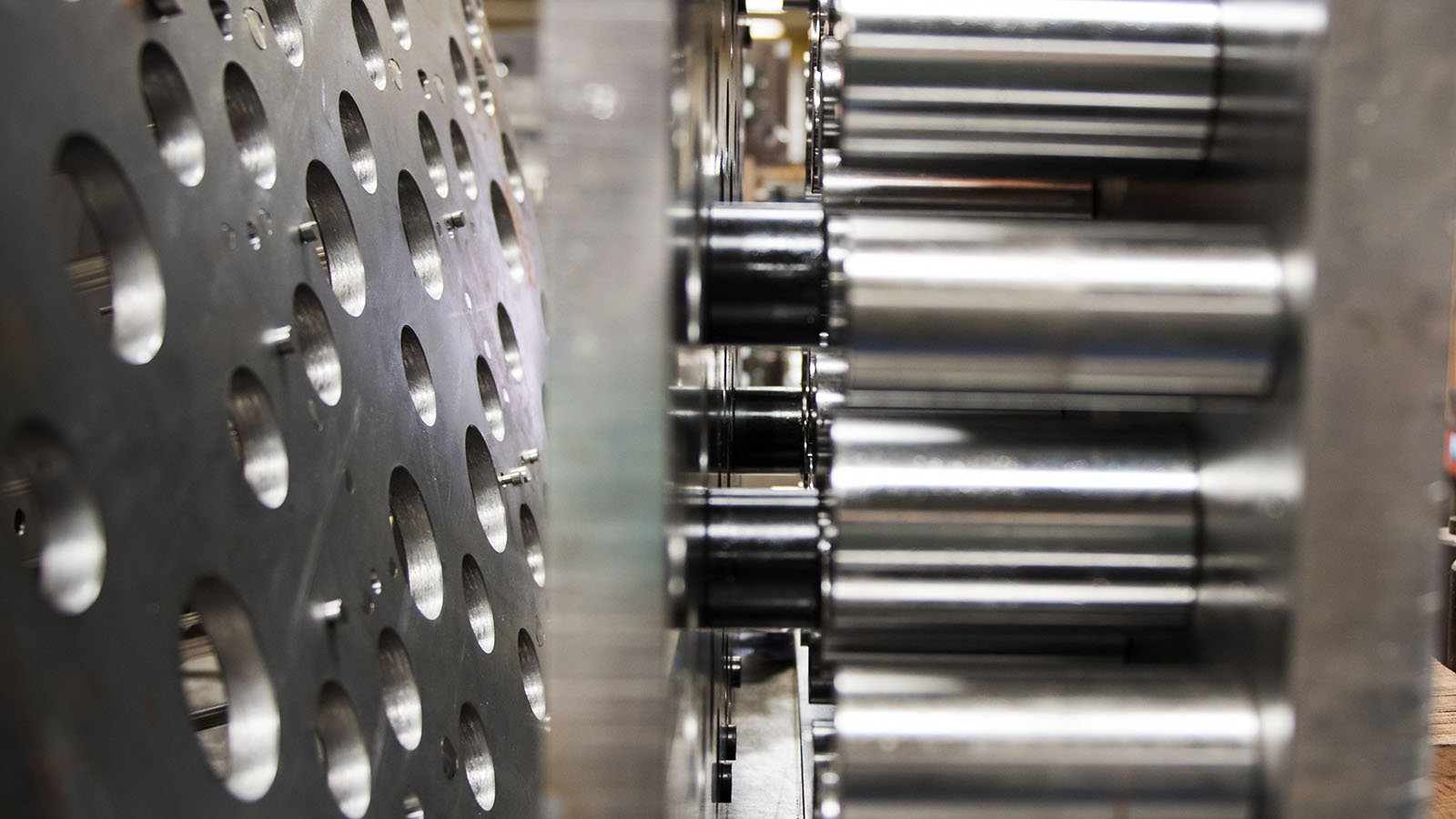Because mold ejection systems move at least once on every cycle of the mold they become a potential wear area for long service life tooling. In this article, we are going to discuss the common failure points for ejection systems, how to prevent them, and how to fix them when they fail.
Ejector Pin and Hole Wear
Ejector pins (also known as knockouts) are located across the surface of the part. During the molding process, the ejection system is retracted back so that the ejector pins are flush with the surface of the tooling. The ejection system and pins are then advanced, ejecting the part from the molding surface. Since ejection systems cycle back and forth on each molding cycle, the guide hole in the tooling surface or the pin itself can wear over time. That wear can show through as flashing around the pin (since plastic can flow into the wear area).
Like most repair work, it’s important to first understand why something happened. This allows you to address the actual problem, not just a symptom of the problem. For worn ejector pins, the problem may be deeper than simple wear. You might have a misaligned ejection system, rust, or lack of clearance in the ejection system. This is why it’s essential to address the issues as early as possible. More wear requires more invasive and costly repair work.
However, if there are no underlying issues, fixing ejector pin and hole wear is accomplished in one of two ways—welding and reworking the area or increasing the size of the pin and hole.
Ejector Pin Lockup
Not only can pins wear, they can also begin to tie up due to the gulling of the pin against the tooling surface. A few circumstances can cause gulling and lockup:
Poor Maintenance Practices – This often comes with running molding materials that create a lot of gas. Not properly disassembling and cleaning tooling is the leading cause of pin lockup.
Rust – If tooling sits for an extended amount of time without proper rust preventative measures, the ejection system can build up rust. Rust doesn’t make a good lubricant.
Misalignment and Clearance Issues – Having a misaligned ejection system or having ejector pins that do no float properly can cause the pin to gull up and lock into the tooling.
So why is this a big deal? Once an ejection system has tied up, the pin may bend or break inside the tooling. In either case, the pin will need to be removed, and any damage will need to be repaired. If the ejector pin holes are damaged, they may even need to be welded or machined to increase the pin size.
Ensuring the proper function of the ejection system when the mold is built is the first step to preventing these issues. The second step is maintaining the mold properly over time. As part of this process, you can use the molding machine settings to predict the wear. The molding machine should be able to sense the amount of force it takes to actuate the ejection system. If that force is slowly rising over time, something is starting to create the resistance, and the machine should alarm off to prevent further damage.
Guided Ejection System Wear
Properly designed and maintained guided ejection systems should last a long time. Excessive wear can be caused by not properly maintaining and lubricating the pins and bushings. Over time, grease that’s exposed to the air collects dirt and grit from the shop, which starts to wear out the bushings and pins. Grease should be cleaned off and replaced at a regular intervals based on the usage of the mold. With proper maintenance, the guided ejection system should get over a million cycles without replacement parts.
Lifter Mechanism Wear
Lifters have small guides to make them function properly. These components should also last a long time if they are correctly maintained. Just like the guided ejection system, the assemblies should be completely disassembled, cleaned, and regreased as often as necessary.
Though lifters have varying designs, they most often have a square surface guided by a square hole. Compared to a standard circular ejector pin, the challenge with lifters is that the corners can create interference and premature wear if not designed and built correctly. If the lifter is square, the corners need to be tight enough to avoid flashing of material but also have enough clearance to prevent gulling.
Compared to replacing an ejector pin, replacing of lifters and lifter components is often more invasive and time consuming and may include custom made components. Therefore, the components must be properly maintained in order to avoid expensive repairs.


